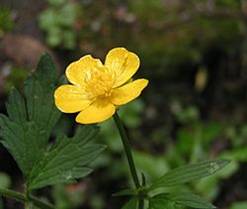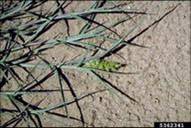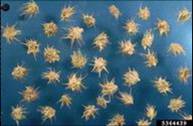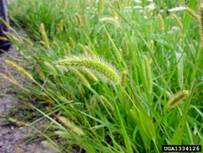Mouth blisters in horses
An often overlooked source could be causing mouth blisters in your horses.
Mouth blisters in horses may occur due to many causes which may include dental problems, viral infections, caustic chemicals, improper fitting tack equipment and potentially harmful plants. More specifically, the one aspect of mouth blisters in horses that is commonly overlooked is potentially harmful plants. Many times horse owners are searching for the solution without recognizing that these types of plants may indeed be the source of the problem. Three plants come to the forefront when considering the source of mouth blisters in horses and they are buttercup, foxtail and sandbur.
Buttercup
Buttercup (Ranunculus species) is common throughout North America. It can be found in turfgrass, landscapes and pastures and generally prefer to inhabit wet areas. Flowers are typically small in size and appear from April to July with bright, shiny yellow petals (5 -7 petals).

Photo credit: forestryimages.org
Time of Concern: Early spring and summer.
Toxicity
Toxicityof buttercup is reported to be highly variable and depends on the concentration of the principle toxin protoanemonin, a bitter tasting oil produced when the plant is crushed or damaged. In addition, most problems occur when horses consume the fresh plant. Buttercup plants found in dried hay are generally not a concern and are normally no longer toxic.
Signs
Buttercup toxicity may include: swelling of the nose, face, lips and skin after contact with the plant. Consumed leaves may cause skin, mouth and digestive system blistering minutes to a few hours after eating the live plant, leaving a burning irritation in the mouth and throat. Increased salivation, colic and diarrhea may also be observed.
Reducing exposure
Horses should not be allowed to graze pastures that have a heavy infestation of buttercup. Clipping pastures before the plant produces seed may help to control buttercup. For a small infestation, you may consider using an herbicide; this may take multiple treatments. NOTE: if using an herbicide, be sure to follow label directions and grazing restrictions. For large infestations, cultivation of the pasture may be the most appropriate option.
Foxtail and Sandbur
Foxtail (Seteria species) and Sandbur (Cenchrus species) are both annuals that reproduce from seed. Foxtail seed heads may look like a bottle brush where sandbur seeds are barbed. Foxtail typically will grow on nutrient rich soils where sandbur is usually found on sandy soils.


Sandbur. Photo credits: forestryimages.org

Foxtail. Photo credit: forestryimages.org
Time of Concern: Foxtail – mid to late summer through fall. Sandbur – flowers and bears burs like fruit from July through September or longer, weather permitting.
Toxicity
The microscopic barbs on the seed heads or stems of foxtail and sandbur can cause physical trauma to the mouth and gastrointestinal tract, and occasionally to the skin by contact. There is no known chemical toxin associated with these plants. The vegetative growth of foxtail and sandbur can be grazed, but are considered to be an undesirable forage species for horses. Symptoms can occur after eating live plant seeds or dry hay.
Signs
Blisters or ulcers on the lips or mouth after horses consume these plants.
Reducing exposure
Timely mowing of pastures will help minimize or reduce seed production. There is no herbicide available to eliminate foxtail or sandbur from grass pastures or hayfields. Be sure to inspect hay; if moderate amountsof seed heads of either of these two plants are found, it should not be fed to horses.
Overall, it is important to be aware that these plants maybe a causing factor of mouth blisters in horses. Periodic inspection of pastures and hay is recommended.
For more information on plants toxic to Michigan horses, please see our bulletin series in the MSU Extension Bookstore and search for Extension Bulletins: E3059, E3060 and E3062.
Additional Resources:
- Tall and Smallflower Buttercup and Mouth Blisters
- Forestry Images
- Uva, Richard H., Joseph C. Neal and Joseph M Ditomaso. Weeds of the Northeast. 1997.



 Print
Print Email
Email



